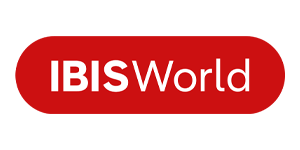
Imagine a borrower acing their annual review: solid cash flow, low leverage, no red flags. Six months later, their supplier goes bust, orders tank and payments wobble. By the next quarterly check-in, the damage is done. Where were the warning signs that periodic reviews missed? Where were the overlooked supply chain snags and margin pressures?
For chief information officers (CIOs), chief technology officers (CTOs) and fintech heads of strategy, this scenario raises a critical question: Is your bank or fintech ready to catch risks in real time? Traditional quarterly or annual risk checks, built for calmer markets, can’t keep up with today’s volatility — think economic swings, geopolitical shocks or sector-specific disruptions. Continuous risk monitoring (CRM), powered by data analytics and enriched with industry insights, is no longer optional. It’s how your bank or fintech stays ahead of risks, meets regulatory expectations and builds trust with clients.
Why CRM Matters for Your Strategy
Periodic reviews are like outdated maps — they show where risks were not where they’re headed. A borrower’s delayed payments or a supplier’s regional instability can escalate between reports. CRM, paired with granular industry data, spots these signals early. A construction downturn hits a steelmaker harder than a medical device supplier. Even within sectors pressures vary. An aerospace parts maker faces different risks than a packaging firm. Industry context helps your teams interpret signals accurately, ensuring timely action. Regulators, like the Federal Deposit Insurance Corp., expect more than static reports. Banks with concentrated commercial lending must show ongoing monitoring, per FDIC guidelines. CRM delivers the real-time oversight and audit trails needed to stay compliant and confident.
Four Strategic Benefits of CRM
• Catching risks early. CRM flags issues such as sector slumps, credit wobbles and supply chain hiccups before they hit financials. A regional bank nearly missed tariff-driven risks in its agriculture portfolio until CRM, layered with industry data, made the exposure clear and actionable.
• Seeing the full portfolio picture. Static reports hide concentration risks, but CRM offers a live view across borrowers, sectors and regions, letting your bank rebalance exposure when warning signs flash. Thematic risks, like regulatory shifts in healthcare, become visible through industry analytics.
• Strengthening compliance. Examiners want proactive oversight, and CRM provides time stamped alerts and clear escalation paths, showing regulators your bank is on top of risks. Industry informed decisions add credibility to your audit trail.
• Boosting team efficiency. Overworked credit teams need focus. CRM automates alerts, filters noise and prioritizes high-risk accounts, letting analysts zero in on strategic decisions. Industry context quickly validates whether a borrower’s issue is unique or sector-wide.
Four Do’s and Don’ts for a CRM Strategy
Do:
1. Prioritize key signals. Focus on high-impact metrics like payment trends or sector volatility to avoid data overload.
2. Integrate systems. Embed CRM into loan origination and covenant tracking platforms for seamless workflows.
3. Customize monitoring. Tailor thresholds by industry and loan type, using industry benchmarks for precision.
4. Define action plans. Create clear escalation protocols to ensure alerts lead to timely decisions.
Don’t:
1. Drown in data. Unfiltered alerts cause fatigue, so streamline dashboards to keep teams focused.
2. Let silos persist. Disconnected tools delay action. Centralize portfolio views for clarity.
3. Use one-size-fits-all approaches. Uniform thresholds miss nuances, so segment by risk profile.
4. Ignore alerts. Unacted signals waste potential. Tie CRM to review cycles.
Building Successful Bank-Fintech Partnerships
For banks and fintechs collaborating on CRM, alignment is key. Banks bring regulatory expertise; fintechs offer agile tech. Jointly define data standards to ensure CRM integrates with existing systems. Regular syncs between bank risk teams and fintech developers bridge cultural gaps, ensuring solutions evolve with market needs. Hire data-savvy talent to translate analytics into actionable insights, avoiding tech for tech’s sake.
The Bottom Line
Why wait for the next review when risks don’t? CRM, fueled by data analytics and industry insights, empowers your bank or fintech to act decisively, protect portfolios and build client trust. Before launching your analytics strategy, make CRM a cornerstone — it’s your edge in a volatile world.


